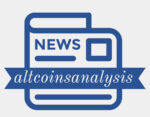The world of finance is undergoing a significant transformation, with the emergence of cryptocurrencies challenging traditional notions of money and value transfer. Among these digital assets, Ripple (XRP) has garnered considerable attention for its potential to become a global reserve currency.
What is a Global Reserve Currency?
A global reserve currency is a widely accepted medium of exchange used for international transactions and held by central banks as part of their foreign exchange reserves. The U.S. dollar currently holds this dominant position, but its future remains uncertain as the global financial landscape evolves.
Why XRP as a Global Reserve Currency?
Proponents of XRP as a global reserve currency highlight several key factors:
- Fast and Scalable Transactions: Ripple’s underlying technology, the XRP Ledger, boasts fast and efficient transaction processing, capable of handling thousands of transactions per second compared to traditional methods. This speed and scalability are crucial for facilitating international trade and cross-border payments.
- Liquidity: XRP has a large and readily available supply, making it a liquid asset suitable for large-scale transactions. Additionally, Ripple strategically releases XRP from escrow into the market in a controlled manner, aiming to maintain stability and prevent price manipulation.
- Central Bank Adoption: While not yet widespread, some central banks are exploring the potential of Ripple and XRP for cross-border settlements. This growing interest from financial institutions could pave the way for wider adoption in the future.
- Neutrality: Unlike the U.S. dollar, which is tied to the economic performance of a single nation, XRP is not directly linked to any specific government or economy. This neutrality could be appealing to countries seeking to diversify their foreign exchange reserves.
Challenges and Uncertainties
Despite its potential, XRP faces several challenges on its path to becoming a global reserve currency:
- Regulatory Uncertainty: The ongoing legal battle between Ripple and the U.S. Securities and Exchange Commission (SEC) regarding XRP’s classification as a security casts a shadow over its future. Regulatory clarity is essential for widespread institutional adoption.
- Central Bank Control: While some central banks are exploring Ripple’s technology, others may be hesitant to relinquish control over their currencies. The willingness of central banks to embrace a new global reserve currency remains a significant hurdle.
- Market Volatility: The cryptocurrency market is inherently volatile, and XRP is no exception. This volatility could deter central banks and other institutions from using XRP as a reserve asset.
- Competition: Other cryptocurrencies, such as Stellar Lumens (XLM), also aim to revolutionize cross-border payments, posing competition to XRP’s potential dominance.
The Future of XRP as a Global Reserve Currency
The future of XRP as a global reserve currency remains uncertain. While it possesses certain advantages, significant challenges need to be addressed. Regulatory clarity, central bank acceptance, and increased market stability are crucial factors that will determine XRP’s trajectory in the global financial landscape.
In conclusion, XRP’s potential as a global reserve currency is a topic of ongoing debate and speculation. While it faces significant challenges, its unique characteristics and growing adoption within the financial sector warrant continued observation and analysis. Only time will tell if XRP can overcome these hurdles and establish itself as a major player in the international monetary system.

